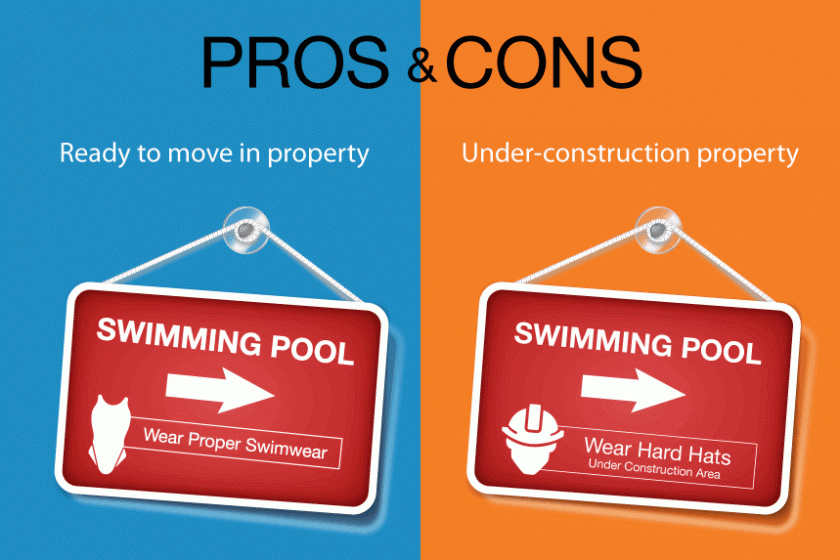Choosing between investing in property that you can move into right away, on the one hand, and property that’s under construction? It might just be a complex decision to make, what with varying inputs from all quarters telling you one thing or the other, about how one is better than the other. Here is a glimpse at the pros and cons of both options, so that you can make an informed decision on the matter.
Property under Construction
To start with, there are plenty of advantages to investing in property that is under construction. There is the obvious advantage that you still get a choice in terms of the structure, the size of the property and the manner of construction of the property itself. Investing in your own under-construction property allows you to offer not only design direction, but functional utility as well.
On the monetary side of things, there is a degree of flexibility with property that is under construction, especially because they can be paid for stage-by-stage based on the status of completion. It is, therefore, a perfect choice if you are on a tight budget. There are also usually many payment plans available that buyers can discuss with the builder and utilize.
On the flip side, there are a few issues with relying on under construction property in making an investment. The biggest disadvantage with under-construction property is that there is no guaranteed timeline to delivery – and you are vulnerable to experiencing delays and hike in expenditure, as well.
There is also the uncertainty of what the final product is going to look like. Since the property is being constructed, you’re responsible for the kind of vision you have for the end product. This can still, of course, be mitigated if you have a good builder and are willing to spend enough money to invest to undo what hasn’t gone your way. Another issue with investing in under-construction property is the lack of clarity in the maintenance charges which will become apparent only upon the completion of construction and clarity on the services and facilities that will be offered. Finally, the burden of service tax is to be borne when one is investing in property under construction, since construction is a part of the service industry.
Ready to Move In
There is an automatic advantage in that you don’t have to wait or work against the difficult odds of delays and mounting costs. Another advantage is that you have the luxury of looking at the final product and then decide whether you want to buy it or not, and to also understand what you are getting into. Furthermore, there is a measure of certainty around the legal status of the property, and you can verify it pretty easily. No service tax needs to be paid, and you have every idea of what facilities are being provided, and will be expanded into. This gives you the comfort of there being no unanticipated expenditure.
There are a few demerits to buying ready-to-move-in property as well. One is that there is no freedom to alter the structure or to change the layout of the property beyond a certain limit. There may also be some issues relating to re-sale, specifically in the legal side. You also run the risk of being charged an inflated price because the property is already completed since maximum price appreciation occurs after construction is completed. You may run the risk of wear and tear if the property is old and quicker depreciation.
Given all these aspects, the final decision should be based on the nature of your requirements when it comes to purchasing a home.

